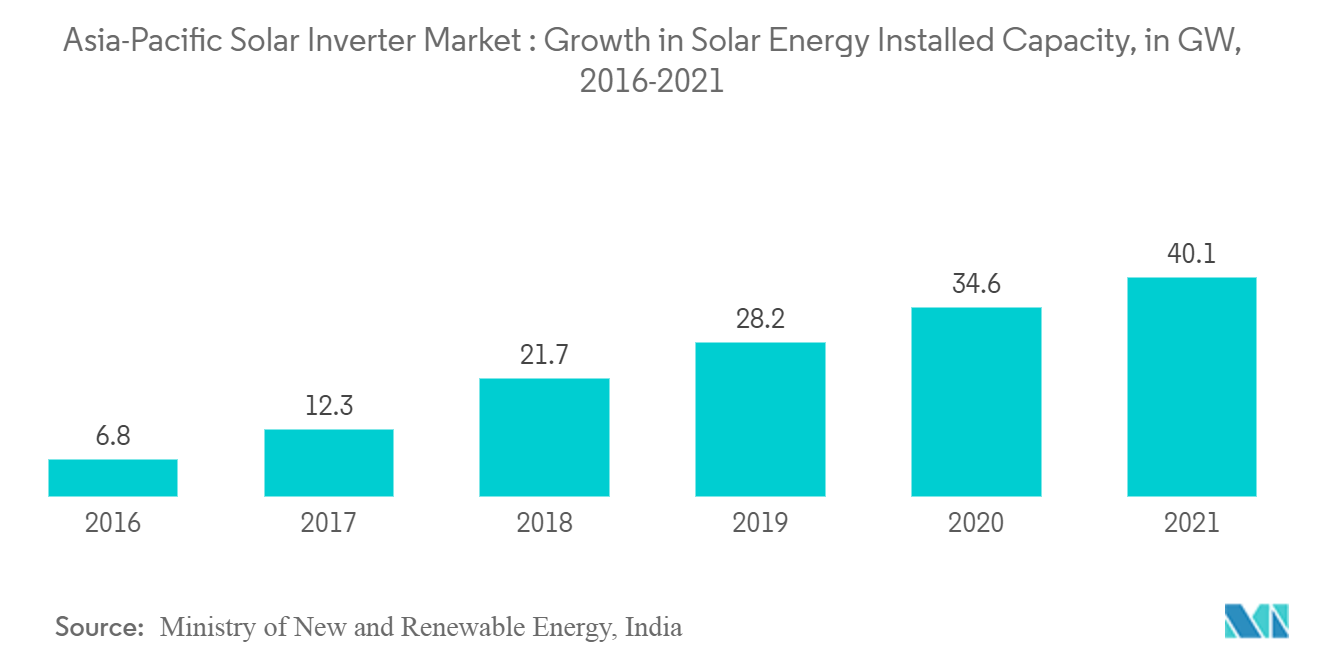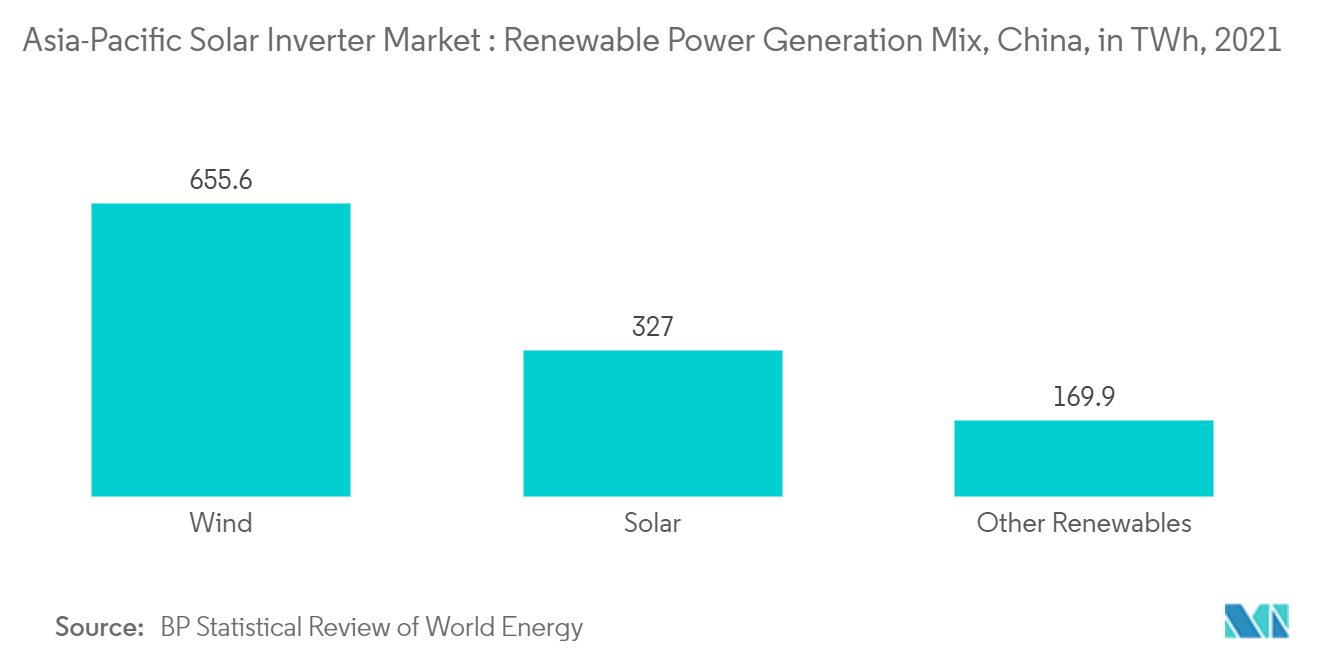Market Trends of Asia-Pacific Solar Inverter Industry
This section covers the major market trends shaping the APAC Solar Inverter Market according to our research experts:
Central Inverters Expected to Witness Significant Growth
- A central inverter is a large grid feeder. It is often used in solar photovoltaic systems with rated outputs over 100 kWp. Typically, floor or ground-mounted inverters convert DC power collected from a solar array into AC power for grid connection. These devices range in capacity from around 50kW to 1MW and can be used indoors or outdoors.
- A central inverter has a maximum input voltage of 1,000V. However, some newer central inverters already come with 1,500V input voltage. These inverters allow PV arrays based on a maximum voltage of 1,500V, requiring fewer BOS (balance of system) components.
- In India, the government has set a highly ambitious goal of reaching a target of 350GW of renewable power generation by 2030, of which 55% is to be supported by solar energy. The current solar energy installed capacity is 40GW as of 2021 and is expected to escalate in the near future due to the upcoming solar PV projects. Solar PV projects highly demand central inverters due to their technical benefits.
- For example, in October 2022, a 1.5MW hybrid BESS system commissioned in Leh Ladakh, India, featured a PVS980 1MW central inverter and a PVS980-BC 2MW energy storage inverter, provided by FIMER, one of the leading solar PV inverter companies in India.
- Further, the technological achievements made by industry experts to introduce new models of central inverters are expected to drive the market. For example, in January 2022, Sungrow, the China-based solar energy company, launched its new '1+X' central modular inverter with an output capacity of 1.1MW. This 1+X modular inverter can be combined into eight units to reach a power of 8.8MW and features a DC/ESS interface for connecting energy storage systems (ESS).
- Owing to such developments, the central inverters are expected to grow at a faster rate in the Asia-Pacific region during the forecast period.

China Expected to Dominate the Market
- China is the largest producer of solar energy in the world. The country has made remarkable progress in solar energy generation due to its location (which is quite sun-drenched) and the declining cost of solar PV technology.
- There has been an increased emphasis on solar inverters in China, providing a Zero-voltage Ride Through (ZVRT) scheme. To meet the scheme norms, the solar PV power plants must continue to operate without breaking. This is even more significant as the country hosts a considerable amount of solar power generation globally. Its share in the renewable power generation mix was around 327TWh in 2021 and will show a greater value due to the upcoming PV projects.
- For example, in March 2022, the Chinese government announced new plans to build solar and wind power plants in the Gobi Desert. The two plants will be installed with a total power capacity of 450GW. The project is a part of the country's efforts to boost renewable energy generation in the power sector.
- Additionally, in May 2022, China's National Energy Administration predicted that the country is expected to install around 108GW of solar power this year. China Huaneng Group has revealed new plans to build a 10GW solar panel factory in Guangxi province.
- Such developments are expected to make the country the frontrunner in solar energy capacity growth in the coming years.


